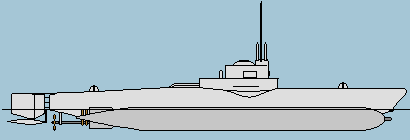
Contruction Data
| Laid down: |
|
| Launched: |
|
| Commissioned: |
|
| Fate: |
|
| Costs: |
|
Technical Data
| Size: |
|
| Length: |
9,03 m |
| Beam: |
Diameter: 1,57 m |
| Diving Depth: |
20 m |
| Armament: |
2 x 53,3 cm torpedoes (G7e) |
| Performance: |
32 hp (Opel 6cyl gasoline engine), 13,3 hp (battery)
Speed: 6,5 kn (5,3 submerged)
Range: 100 miles at 6,5 kn (8,5 miles at 5,3 kn submerged) |
History
The Biber
was one of most used German mini-submarine during World War II. Operating since March 1944, the single seated vessel was widely used in different theaters of operations, but despite the high number of boats build (324) their success was only marginal and they where replaced by the more powerful Seehund
minisub in February 1945. When used against the invasion fleet in the Normandy, about 60-70% of the boats were lost, many through allied anti-submarine warfare, many caused by CO2 poisoning of the submarine driver. Their operations in Dutch rivers and channels proved more successful, when the small vessels operated against bridges. It was also planned to transport them from Norway to the Murmansk area via a normal submarine, but this operation had to be canceled, the same happened to a secret operation to transport Biber
submarines to the Suez Channel with a BV-222 flying boat.
|
|


